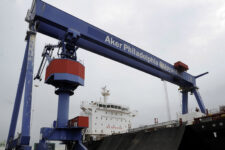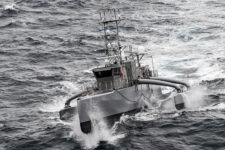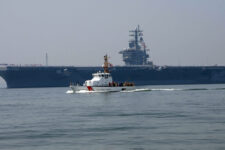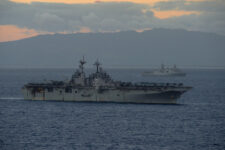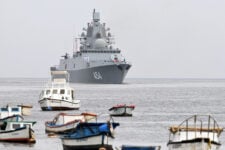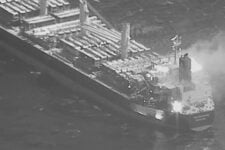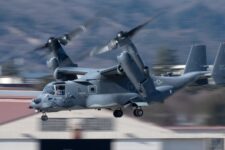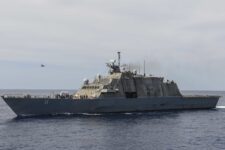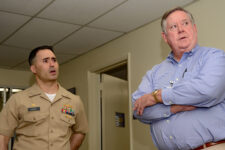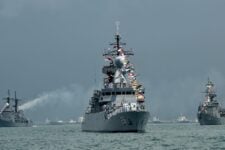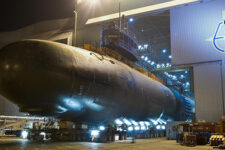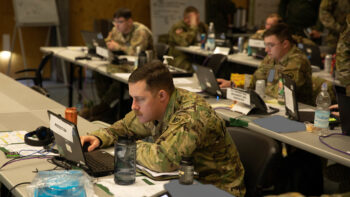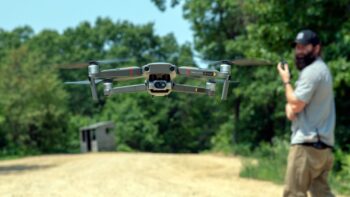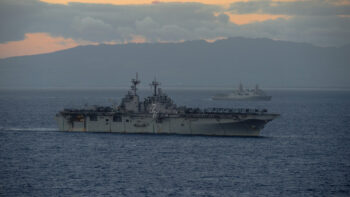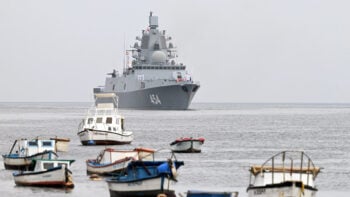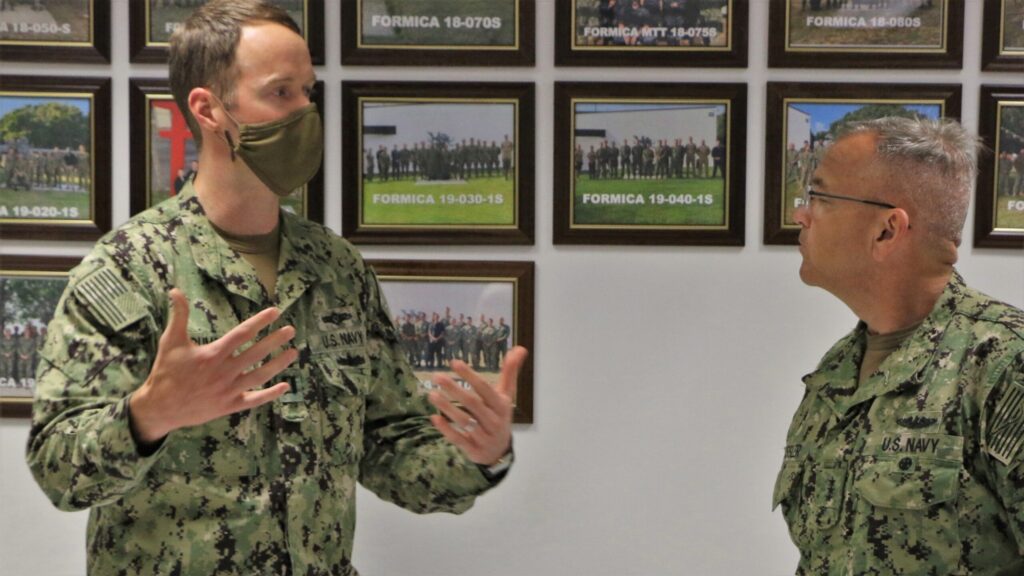
Vice Adm. Jeffrey Trussler (right), deputy chief of naval operations for information warfare. (U.S. Navy photo)
SEA AIR SPACE 2023 — The Navy just wrapped up a first-ever “Naval Space Summit” with senior leaders of the service, the Space Force and US Space Command. It was a high-powered meeting called by Secretary Carlos Del Toro in large part to ensure that Navy and Marine Corps will get what they need for maritime missions out of the military’s space capabilities.
The main goals of the March 29-31 space summit were to “foster greater understanding about the reliance of the Navy and Marine Corps on existing space capabilities, to acknowledge the issues faced in adapting to and incorporating rapid technological changes, and to identify the challenges involved in enabling future naval and joint warfare and protecting the United States and its allies,” according to a Navy press release issued Sunday.
“We are here today because in the years to come, we will all face new challenges, and we also stand to benefit from new opportunities in this domain,” said Del Toro in the release. “When thinking strategically about the future, it’s often a good idea to take a step back and recall where we came from, and how we actually got here. We are ‘here’ because of the Department of the Navy’s mission: to sustain global presence for projection of sea power.”
FULL COVERAGE: Sea Air Space 2023
Vice Adm. Jeffrey Trussler, deputy chief of naval operations for information warfare, told the Navy League’s annual Sea Air Space conference Monday that the meeting was “step one” to better coordination with the Space Force, which is responsible for acquiring space systems for joint needs, as well as space operators at SPACECOM. “It’s all about the dialogue,” he said.
“Over the past year, the Navy and the Space Force have had multiple staff talks together, at all classification levels, and … the Navy is working, leading the way, to make sure we get after and clearly define those joint force requirements so that that new service can satisfy us all.”
The meeting also served to bring together the Navy’s own space stakeholders, including including Adm. Samuel Paparo who heads up the US Pacific Fleet, as well as “the folks that do requirements resourcing and policy back here in the Pentagon.”
The Navy press release noted that other attendees included Undersecretary Erik Raven, Commandant of the Marine Corps Gen. David Berger, and Vice Chief of Naval Operations Adm. Lisa Franchetti.
Trussler explained that space is critical to the sea service because the operations in the maritime domain are all about maneuvering. The Navy is “the maneuverable striking force out there,” he said.
“We’re going to have some of our operations that are going to depend heavily on space — for our weapon systems, for GPS, for our communications and how we’re going to maneuver to stay alive. And, so, a big concern of ours, but that’s why we are being proactive,” he added.
In particular, Trussler said, satellite communications, and access to the electromagnetic spectrum, are a linchpin for maritime operations.
“We don’t have Cat5 [ethernet] cable connecting us to anything. We’re dependent on that spectrum to do our distributed maritime operations. So, we’re looking at how best to utilize and take advantage of all that capability. Because in the end, everything we do depends on spectrum,” he said.
Breaking Defense’s Senior Space Reporter Theresa Hitchens moderated the April 3 Sea Air Space panel at which Vice Adm. Jeffrey Trussler spoke.

